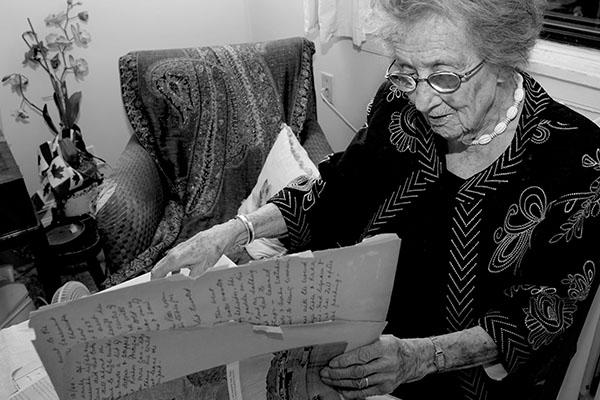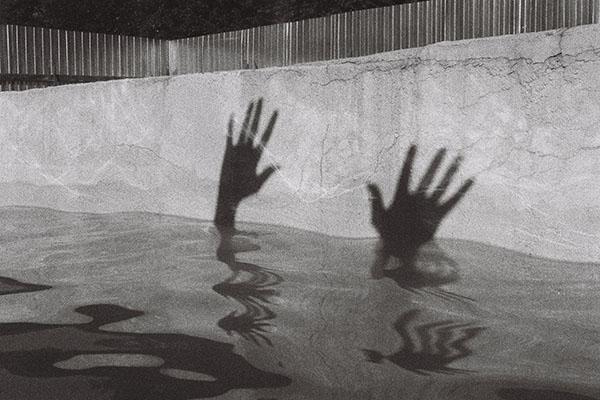The last year has seen two events of major concern to older persons, especially those with significant frailty who are unable to live independently. The first was the isolation forced on them by the COVID-19 pandemic and the often substandard conditions under which they lived. The second was the passage of Bill C-7 which greatly expanded the criteria for MAiD.
Now, one does not have to have a reasonably foreseeable death, only a severe chronic illness, and be suffering intolerably because of it. The suffering does not have to be physical and very often is not. The loss of dignity in these circumstances can be a great source of suffering and much of this is avoidable.
To create a culture of life, we have to be attentive to the many ways in which dignity can be compromised, and innovative in ways that we can enhance it.
Dignity has been defined in different but fundamental ways. The major point of division is whether we regard dignity as something bestowed from the outside based on certain required characteristics or something inherent by virtue of one’s humanity. If the former, the vulnerability of the elderly person is immediately apparent.
Nuala Kenny in Rediscovering the Art of Dying stresses that it is the experience of dignity, and in particular the suffering that comes with the loss of dignity, that highlights its inherent nature and that demands our respect for it especially in the times that it is threatened. It is an attribute that cannot be lost regardless of the circumstances.
Harvey Max Chochinov, in “Dignity Conserving Care,” while alluding to the differing understandings of dignity, emphasizes both the inherent awareness of dignity and the individual’s demand that it be respected. This misapplication of the concept of dignity in the use of the term “dying with dignity “ as a justification for euthanasia is balanced by the insistence that we all wish to live with dignity until we die.
Awareness of one’s dignity being threatened, not just now but in the future, is perhaps felt most acutely by those with gradually worsening cognitive impairment: the various forms of dementia. This awareness of the loss of dignity both in the present and, perhaps more importantly in the future, can lead to avoidable suffering, suffering enough to trigger a request for MAiD under the new provisions of Bill C-7. Some of these threats are illustrated in the following case.
Jane was an 86-year-old woman who had been declining at home for several years. Previously independent and living with her husband, she had noticed that her memory was becoming increasingly poor. Gradually, she had more difficulty with her everyday activities and needed more assistance from her husband and then with other help that he arranged. She began to get lost in previously familiar surroundings, and it was difficulty in handling the wandering at night that proved to be the trigger of seeking admission to a long-term care facility.
Jane did not understand why she had been moved to an unfamiliar place surrounded by strangers. She felt that no one explained anything to her and all she wanted was to return to her familiar surroundings.
She had difficulty with her bowels and bladder and felt embarrassed by her briefs needing to be changed. She then developed pneumonia and needed to be transferred to a hospital. On her return, she felt much weaker and she was told she would not be transferred again. On her good days, which seemed less and less, she wondered why she was not asked what she wanted. She was also finding it difficult to remember when her family came in. Her last few months were marked by increasing confusion and increasing difficulty with feeding.
This journey illustrates several elements of dignity that can be overlooked if not paid attention to. What then are the various elements of dignity that we need to pay attention to? How can we then enhance these to minimize avoidable suffering and honour the elderly person?
One of the most important elements is the sense of self-worth. Jane felt this acutely with her perception, as with the decline in her condition, that she had no useful contribution to make. This, as with many other areas, is not intentional on the part of the staff but underlies the need for constant awareness of our attitudes and a willingness to receive feedback on our care.
Two other elements of dignity are interwoven. The first is the need to make personal decisions, the stress being on personal. Autonomy has rightly been given the precedence in making decisions for oneself while recognizing there are limits. Respecting autonomy, therefore, is an important element in the respect of dignity. Jane, in her more lucid moments, recognized this was being taken away, often by the assumption of the staff that she was not capable of making that or any other decision.
The default option needs to be that the person is capable of a particular decision until proved otherwise. Clearly, understanding has to be probed, and progression of the cognitive impairment will see a gradual reduction in the decisions that can be safely made. However, even the assessment of capacity, done in a sensitive way, will have an inherent dignity-affirming aspect that the elderly person will sense.
The other element of dignity interwoven with the sense of self-worth is that of uniqueness. It is an unfortunate tendency of health care institutions to reduce patients to a diagnosis or a number. There have been determined efforts to correct this but in the busyness of everyday clinical activity all of us can slip up. To be addressed and referred to consistently by the form one has chosen can only enhance the sense of the elderly person that dignity is being respected.
Sustaining meaningful relationships is a further element in the enhancing of dignity. It is one that is particularly vulnerable to the transfer to a long-term care facility. The faces with which Jane was familiar at home have been replaced by those of strangers and the recreation of relationships can be very challenging. Very often those closest may well be physically limited themselves. The COVID pandemic only accentuated the sense of isolation that many seniors felt despite the creative initiatives of the staff.
One’s sense of dignity is often rooted in the meaning and purpose one sees in life. Admission to a long-term care facility challenges this sense and the perceived lack of purpose can be very undermining. Meaning is often derived from one’s spirituality that helps to maintain hope. The time of transition is one where spiritual support is of great help in sustaining hope and dignity and redefining the goals of one’s life in response to the changed circumstances.
The sense of purpose is something that is fragile and easily undermined with this critical change in the elderly person’s life, the sense that they have nothing further of value to contribute. There are two aspects to this. The first is the need to be involved as much as possible in their own care and to be encouraged and supported within the limits of their frailties. It is too easy, and perhaps take less time, to assume that they are not capable of the everyday self-care tasks. The risk is that the elderly person will feel that they are now a burden rather than a member of the care team.
The second aspect of purpose is one that is harder to correct and is more a reflection of Western society. It is the esteem given to the wisdom of elderly persons as the repository of family and community knowledge. What a boost to one’s self-esteem of an elderly person when they are asked for their insights. And what a blow to their sense of purpose and dignity if they are ignored, especially away from their home.
The awareness of dignity is also rooted very much in one’s body image and how it is regarded and respected. This is an area where sensitivity of the staff to the patient’s basic needs is so important. One obstacle to this respect has been the staffing levels often found in long-term care facilities where, despite the best intentions, there is simply not enough time to give the elderly person the attention they need. The embarrassment felt by Jane to her briefs being changed when she has been incontinent is a natural response and calls for a level of sensitivity that will minimize the lack of dignity.
Respect for dignity can also be demonstrated in other personal ways. How one communicates with the elderly person conveys much. The language chosen must be as respectful as possible. Once again the pressure of understaffing can be felt and it requires staff with a deep understanding of the limitations of the elderly to allow them to maintain respectful communication.
Responsive behaviours, often worsened by sensory deficits, require considerable empathy on the part of the staff to allow them to communicate in a respectful manner. An additional way of showing respect for the dignity of the elderly is the care and attention given to their appearance. When their appearance is something they have taken pride in and when how they look is felt to be important to the staff, their own sense of dignity will be strengthened.
Having highlighted the many, and often unsuspected ways, that the dignity of the elderly person can be compromised, we are still faced with their inevitable decline both physically and cognitively. It is there where we are called be people of compassion and aware that we are all in some way dependant, some more than others. We share a common humanity.
How, then, can we make the respecting and enhancing of dignity in the elderly a reality? Chochinov has proposed two ways that are complementary. In his 2007 article, “ Dignity and the Essence of Medicine,” he makes the point that “how patients perceive themselves (being) seen is a powerful mediator of their dignity.”
He proposes a framework for health care providers that allows them to become more sensitive to the dignity of the elderly person by paying attention to certain dignity-enhancing attributes of the provider. These attributes he describes by means of a mnemonic, “The A, B, C and D of Dignity Conserving Care.” A being for attitude, B for behaviour, C for compassion, and D for dialogue. For each of the attributes, Chochinov has developed very useful self-assessment criteria for health care providers to evaluate themselves.
The first attribute relates to the need for health care providers to examine their attitudes and assumptions that can influence the way they care for the elderly person. The awareness of these attitudes can then lead to insight into behaviours that can play an important role in mediating the person’s dignity. Some of these behaviours include use of respectful language, giving the patent one’s full attention and sensitivity to any body examination or exposure.
Chochinov then focuses on the attribute of compassion: the awareness of the suffering of the other and the wish to relieve it. He realizes that for some this is a natural disposition and for others something that gradually develops through life experiences. It is important, however, to convey to patients an awareness and acknowledgment of their feelings and of respect for their dignity.
Moving on now to dialogue, the importance of open communication between the health care provider and the patient is stressed. The need is for the full exchange of information on the part of the provider and the ability of the patient to share questions and concerns. In identifying dialogue as an important attribute, Chochinov brings the need for patients’ sense of dignity, in their own unique way, to be understood and enhanced.
We all have an innate sense of our dignity and of the need for its recognition and affirmation. Threatened, we feel vulnerable, and none more so than the frail elderly, especially when removed from their familiar surroundings. Their self-identity and indeed their sense of purpose in living becomes weakened and diminished.
It is therefore of great importance that all in contact with the frail elderly are aware of the many ways outlined here in which dignity can be compromised. Awareness, especially among health care professionals, of the personal attributes necessary for the enhancing of dignity, will engender an atmosphere of respect. By creating a framework where the elderly can voice the awareness of their dignity and know they will be heard, a new sense of purpose and meaning can be acquired for their lives.
Photo by Peter Stockland
Convivium publishes texts that do not necessarily reflect the views held by Cardus, the Convivium team, or its editors. In the spirit of discussion, dialogue, and debate, we ask readers to bear in mind that publication does not equal endorsement. Thanks for reading. Join the conversation!






